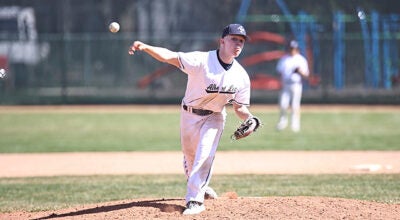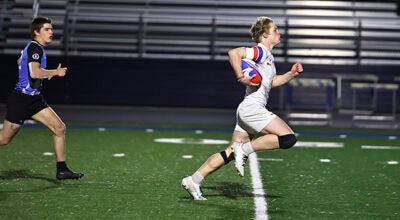Pitcher make Minn. new home
Published 1:15 am Friday, February 21, 2014
FORT MYERS, Fla. — Phil Hughes kept giving up homers, and he kept hearing about it from the media in New York.
Now that he’s in a pitcher-friendly stadium in more laid-back Minnesota, those problems should subside.
“It’s just a different atmosphere over here,” the Twins’ right-hander said in a quiet clubhouse. “So far, so good.”
After seven seasons with the Yankees, Hughes signed a $24 million, three-year contract to make Target Field his new home.
“It’s kind of nice to hit the reset button,” he said, on a career that never reached its potential after the Yankees chose him with the 23rd pick of the 2004 draft.
Inconsistency and injuries held him back. So did all those pitches that were re-directed over outfield fences.
In the past two seasons, Hughes allowed 39 homers in 177 innings at home and just 20 in 160 innings on the road.
The difference between his performances last year at Yankee Stadium and other AL parks was remarkable:
–At home: 16 starts, 1-10 record, 6.32 ERA, 17 homers
–On the road: 13 starts, 3-4 record, 3.88 ERA, seven homers.
But Hughes doesn’t place a lot of blame for that discrepancy on a home ballpark with a short fence down the right-field line.
“It was a little bit to do with it,” he said. “I need to worry about myself first and not use the stadium or my environment as a crutch. So for me it was a lot of factors, but the ballpark was one small factor in that decision” to sign with Minnesota.
Before Hughes’ recent bullpen session at spring training, Twins pitching coach Rick Anderson was curious.
“I asked him what was the deal with the homers over there,” Anderson said. “I said, ‘Is there anything I should watch for in your deliveries?”’
The problem, both agreed, was that when Hughes struggled, he tinkered with his mechanics. He was thinking too much about what to do instead of just taking the mound and doing it.
“I was constantly making adjustments last year after I got off to a rough start, couldn’t really get out of it and that wasn’t necessarily a good thing,” he said. “I had success in this league doing a certain thing and when I got away from that it was just kind of a downward spiral.”
Anderson puts it more simply: “When that mind gets in the way, it’s hard to have success.”
The Twins added Hughes and Ricky Nolasco after their starters had the worst ERA in the majors last season, 5.26. Kevin Correia and Mike Pelfrey, coming off a rough first season after Tommy John surgery, also return.
One of Hughes’ best outings last season came at Minnesota. He allowed one run on six hits in seven innings of a 7-3 win. That improved his record to 4-7, but he didn’t win again.
“He threw a great game against us,” Anderson said. “We’ve always liked Phil.”
So much so, that he was one of their targets when they were trying to trade Johan Santana before the 2008 season. Santana ended up going to the New York Mets and Hughes had an outstanding season as a setup man in 2009 when the Yankees won the World Series. Then he won 18 games in 2010 and 16 in 2012.
That got a lot of attention in the media hotbed of New York. So did his struggles last season.
“I put a pretty good amount of pressure on myself, regardless of fan, media spotlight, all that stuff. I did a pretty good job of staying under the radar as much as I could,” Hughes said. “They had enough media stories to kind of worry about on their own, so it was more about just kind of navigating through whatever you want to call it over there.”
In Minnesota, he’ll be throwing to new Twins catcher Kurt Suzuki now that Joe Mauer has made the switch to first base.
“Phil’s got arm strength,” Suzuki said. “Everybody talks about the home run ball, but you’ve got to look at everything that goes into it. Yankee Stadium is a tough place to not give up home runs.”
Especially for a pitcher with Hughes’ style.
“He’s really a guy that’s going to attack. He’s going to throw strikes,” Suzuki said. “You give up home runs when you’re throwing strikes.”
But with his new home field, Hughes expects to be looking over his left shoulder with fear less often when balls sail toward the right-field fence.
“That,” he said, “is a good thing.”



